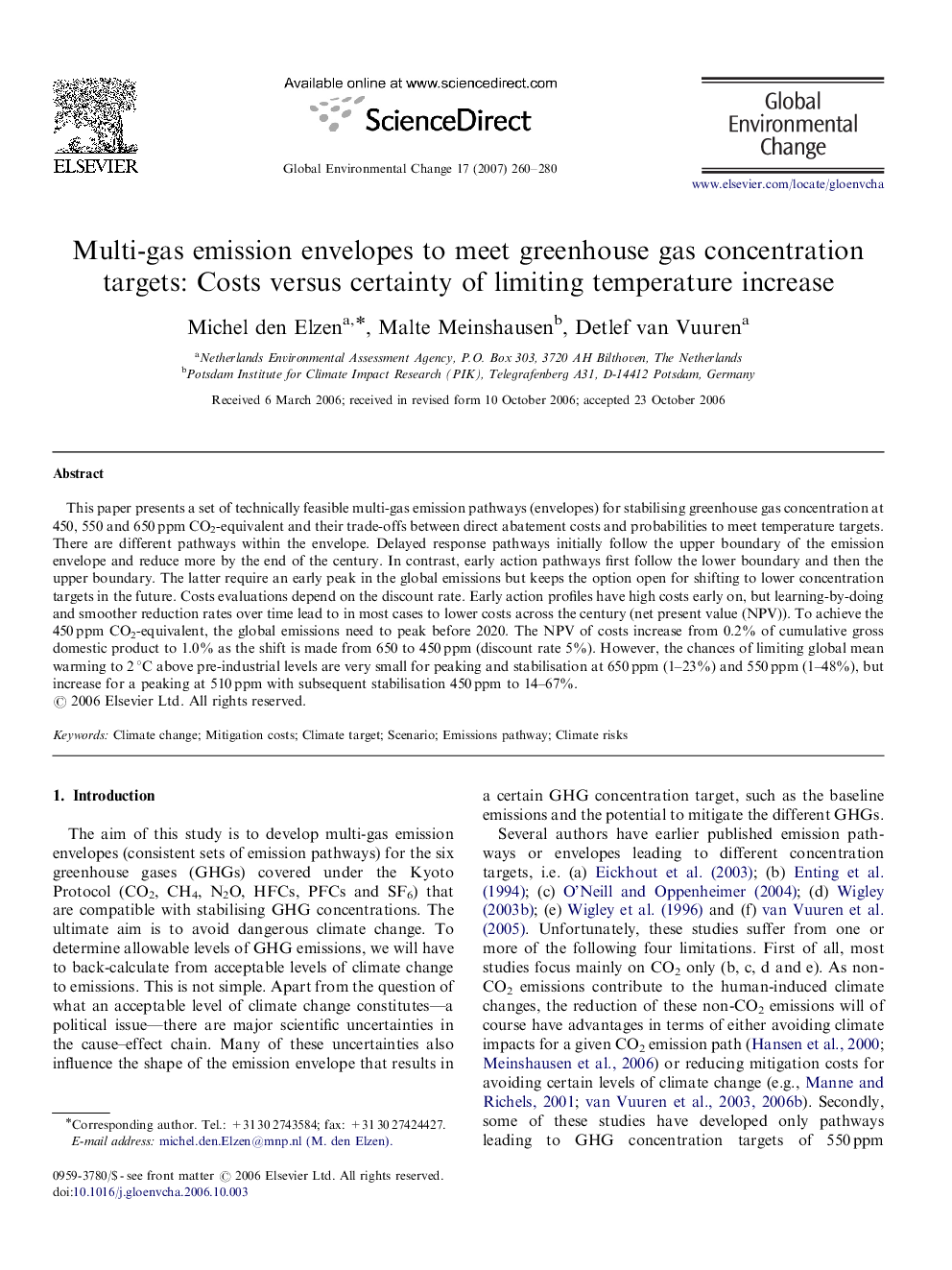| Article ID | Journal | Published Year | Pages | File Type |
|---|---|---|---|---|
| 1055181 | Global Environmental Change | 2007 | 21 Pages |
This paper presents a set of technically feasible multi-gas emission pathways (envelopes) for stabilising greenhouse gas concentration at 450, 550 and 650 ppm CO2-equivalent and their trade-offs between direct abatement costs and probabilities to meet temperature targets. There are different pathways within the envelope. Delayed response pathways initially follow the upper boundary of the emission envelope and reduce more by the end of the century. In contrast, early action pathways first follow the lower boundary and then the upper boundary. The latter require an early peak in the global emissions but keeps the option open for shifting to lower concentration targets in the future. Costs evaluations depend on the discount rate. Early action profiles have high costs early on, but learning-by-doing and smoother reduction rates over time lead to in most cases to lower costs across the century (net present value (NPV)). To achieve the 450 ppm CO2-equivalent, the global emissions need to peak before 2020. The NPV of costs increase from 0.2% of cumulative gross domestic product to 1.0% as the shift is made from 650 to 450 ppm (discount rate 5%). However, the chances of limiting global mean warming to 2 °C above pre-industrial levels are very small for peaking and stabilisation at 650 ppm (1–23%) and 550 ppm (1–48%), but increase for a peaking at 510 ppm with subsequent stabilisation 450 ppm to 14–67%.
